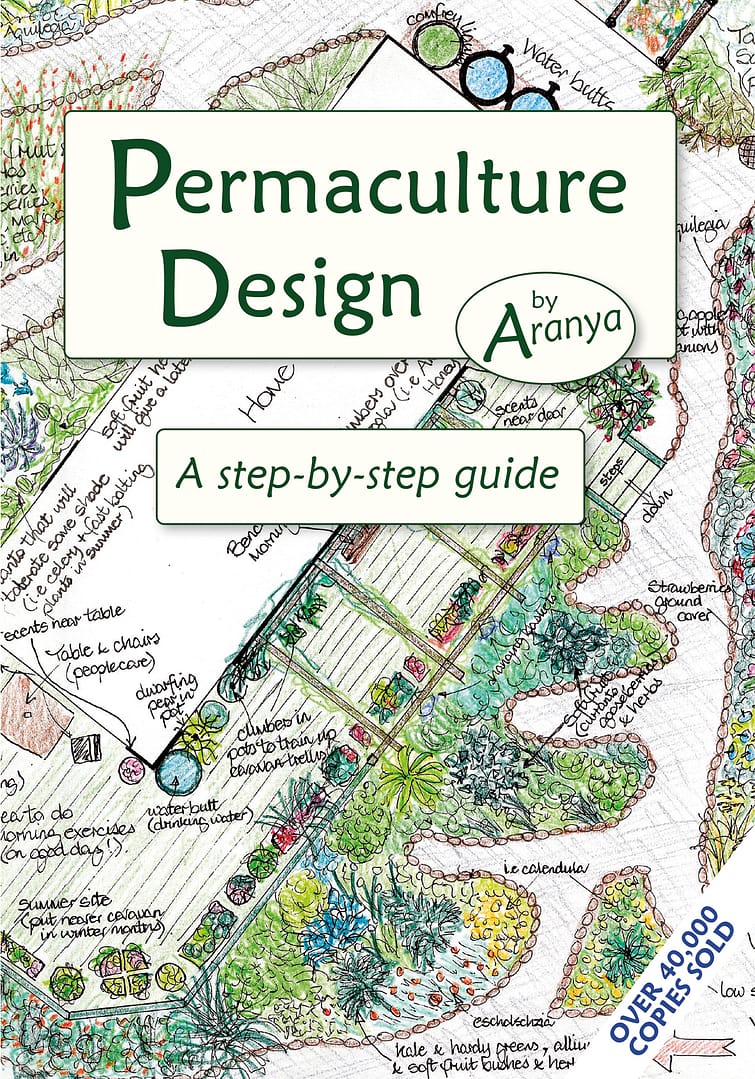| Pages: | 208 pages |
| Book Art: | Full-color illustrations throughout |
| Size: | 6 x 8.5 inch |
| Publisher: | Permanent Publications |
| Pub. Date: | September 3, 2012 |
| ISBN: | 9781856230919 |
Permaculture Design
A Step-by-Step Guide
Are you excited about permaculture but unclear how to put it into practice for yourself? In this unique, full colour guide, experienced permaculture teacher Aranya leads you through the design process from beginning to end, using clear explanations, flowcharts and diagrams. It is based on course worksheets which have been designed, refined and tested on students over time. Linking theory to practice, he places the ethics, principles, philosophies, tools and techniques directly into the context of the process itself. While written for anyone with a basic grasp of permaculture, this book also has plenty to offer the more experienced designer.
This guide covers: Systems and patterns ~ Working as part of a design team ~ Land and non-land based design ~ Design frameworks ~ Site surveying and map making ~ Interviewing clients ~ Working with large client groups ~ Identifying functions ~ Choosing systems and elements ~ Placement and integration ~ Creating a design proposal ~ Project management ~ Presenting your ideas to clients ~ and much more.
A great reference for anyone who has done, or is thinking of doing, any kind of permaculture course.
Reviews and Praise
"For most people, taking the permaculture design course is a major life event. It opens the door on a new way of looking at the world, a new way of being in the world. It affects you on so many levels that, however well you took notes, inevitably some of what you learnt passes you by. That's why Aranya wrote this book: so that people could go away from the design courses he teaches and have a reference to the design methods he'd taught them. In effect it's a toolbox of permaculture design methods. Some people keep their tools in a higgldy-piggledy pile, chipped, blunt and uncared for. Others keep them in perfect order in a neat box, each one in its place, oiled, sharpened and ready to go. Aranya is one of the latter and this book reflects the keen clarity of his mind. Open its pages and you can put your finger right on the design tool you need, from triangulation to the enticingly-named desire lines. It's all there, described and illustrated, clearly and comprehensively."--Patrick Whitefield, author of The Earth Care Manual, and How to Make a Forest Garden
More Reviews and Praise
"Permaculture Design offers the reader a full look at the design process from team formation and management to client interview to data gathering to analysis. It goes on to give guidance for presenting proposals, managing implementation (including time management), and evaluating results. Filling an important and largely empty niche, it deserves to be in the hands (or in the back pocket or handbag) of every serious designer. The book is a major addition to the permaculture literature by a deeply insightful and generous author. Highly recommended."--Peter Bane, author of The Permaculture Handbook
"Teaching/learning how to do permaculture design work takes a lifetime and, as we usually only have people for 2 weeks (and there is plenty else to do) that's a big challenge. Generally we can only provide a broad-brush overview of a design process and then a sketchy (but useful) go-though to ground the information. That's usually much more than a person knew about before they came and yet there are a million questions that the novice so rightly needs to ask. Here, in this packed volume, there is a wealth of techniques and strategies for the newbie and the not so newbie alike. I am enjoying the read and I am recommending this book to all my students at Gaia University. Thanks for gathering all this together Aranya and thanks for explaining it all in your clear, informal and yet complete style."--Andy Langford, permaculture teacher and founder of Gaia University







